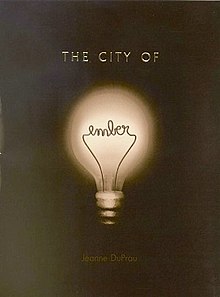*Irish gaelic for “welcome back!”
Hello, faithful and exceedingly patient fans of Third Age Thoughts! This is where the wisdom of age is dispensed to the world’s young (who don’t care) and old (who already know it). After (what’s it been, three years?) of silence, we’re going to try to start up again. Hopefully we’ll be better received than the 2011 reboot of Charlie’s Angels.

It’s been a long while since I’ve written anything, so I’ll start off with something easy. Here’s a story from a vacation Kathleen and I took to Ireland last summer. It was just a short trip to the Emerald Isle, a little over a week. Our plan was to see the western side of the island by car, staying at hotels, hostels, or airbnbs as the fancy took us.
When renting the car, I got to choose if I wanted automatic or manual transmission (apparently manual transmission is not extinct outside of North America). The prospect of driving on the wrong side of the road was a bit daunting, so the idea of gear-shifting on top of that, with my left hand no less, was downright scary. But it’s an adventure, so what the hell!, I opted for stick.

First day there was a long drive across the country from Dublin to Killarney and the west coast. I soon found that the left-hand driving wasn’t a problem, nor was the stick shift. The problem was that the roads were very narrow, and everyone driving east was a speed demon! It was even faster because they were driving in kilometers, which as you know are about 60% faster than miles (it’s true! Look it up!).
And on top of that, almost all the roads seemed to be lined with either big gangly Irish trees or old stone fences. So I spent the drive frantically calculating in real time the exact route to avoid crashing head-on with each oncoming maniac, while still missing the rocks and trees on my left, mere inches (or even meerer, centimeters) away.
* * *

We stopped for an early lunch (or late breakfast) in the village of Abbeyleix (pronounced “Abbi-leesh”). It was a pretty little town, not too sleepy but not too busy, not too touristy but not too drab, just the right place to settle down for a month or two if you wanted to try something different with your life, we thought, in a little rented studio flat above the coffeeshop.
We sampled their wares. There was an open-air fishmonger’s stand set up in the town square, with a guy energetically chopping the heads off a big pile of fish, one at a time. (We didn’t actually sample these–the prospect of driving for hours with a bag of fish heads didn’t seem too appealing, especially as we’d have nothing to do with them once we reached our hotel.)

We checked out the local Quickie-Mart equivalent, looking for some Cheetos or other munchies, but the idea of corn-based junk food doesn’t seem to have penetrated into central Ireland. I’m guessing Big Corn doesn’t have a stranglehold on agribusiness in Ireland the way it does in our country. Instead, Big Potato seems to hold sway here. All the junk food, including the ones shaped like Cheetos, seemed to be potato-based. It was all strange and new, but at least the sullen, studded teenager with blue and black hair behind the cash register was like a familiar piece of home.
Interesting tidbit: the Irish invented the flavored potato chip. True fact, it was invented by Joe “Spud” Murphy(I’m not making this up) and Seamus Burke in 1954, in their shop in Dublin.
We had our best luck at the Mueller and O’Connell Bakery, where the sticky buns and sourdough loaves were fresh-baked and still fragrant. We breakfasted on sweets and cups of cappucino with little designs stenciled in cinnamon on the top. Thus fortified, we resumed our drive. Hope to see you again some day, Abbeyleix!
* * *

Westward ho! We were getting comfortable enough with driving the Irish roads to be able to relax a little and enjoy the rural scenery. We made it to the Torc Hotel in Killarney in plenty of time for a hearty dinner. I felt it was my duty to order Irish Stew, which was heavenly! It was rich with Guinness Stout, and had a kind of beef I almost couldn’t recognize. I think it might have come from a real cow, the kind you keep in a field where it eats grass and brushes away flies. It was like a taste of red meat from my childhood, before genetic engineering and bovine growth hormone.
The table next to us was filled with a large extended family of aunts, cousins and nieces who seemed to be planning, speculating on, and in general anticipating the upcoming wedding of one of their number. I call them the Een family, because all of their names seemed to end in “een”. There was Helen the matriarch, Colleen, Pauline, Maureen (she was the one getting married), Norine and others.

When they learned Kathleen’s name, they realized she must be part of the clan too, and invited her over. (I wasn’t invited, but that was okay because this was clearly a ladies-only celebration going on here. They did allow me to take their picture.) Kathleen caught up on all the latest news from her long lost family, gave the young bride-to-be her share of sage advice, laughed at the foibles of women present and men absent, and had a wonderful evening.
And that was, more or less, day one of our Irish adventure.
Thanks for reading! Hopefully it will be less than three years to the next post!
Dorn
April 12, 2024

















 Trentin Quarantino’s
Trentin Quarantino’s 







































































































































































































































































































































































































